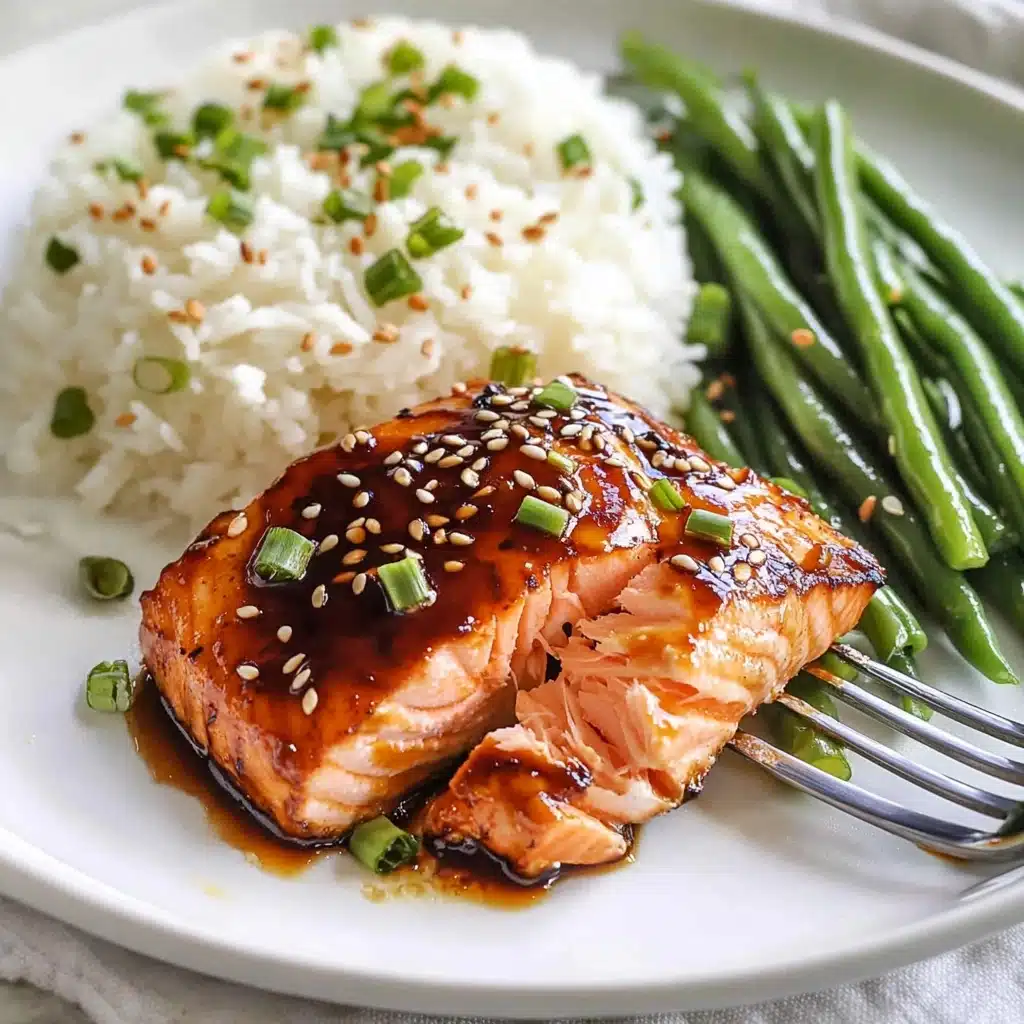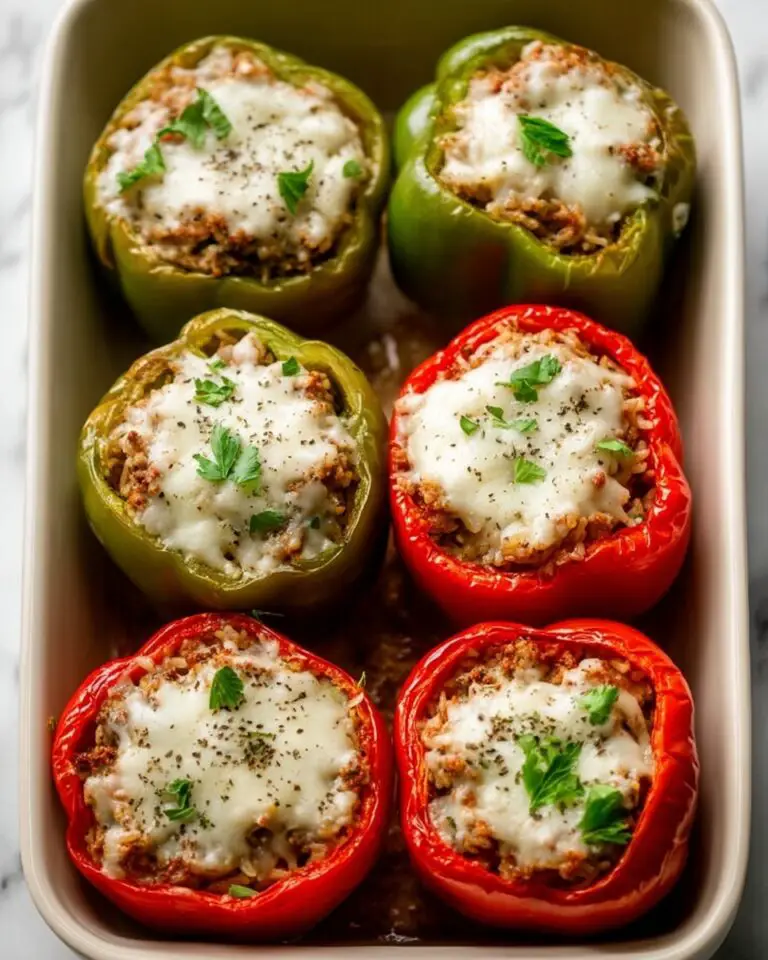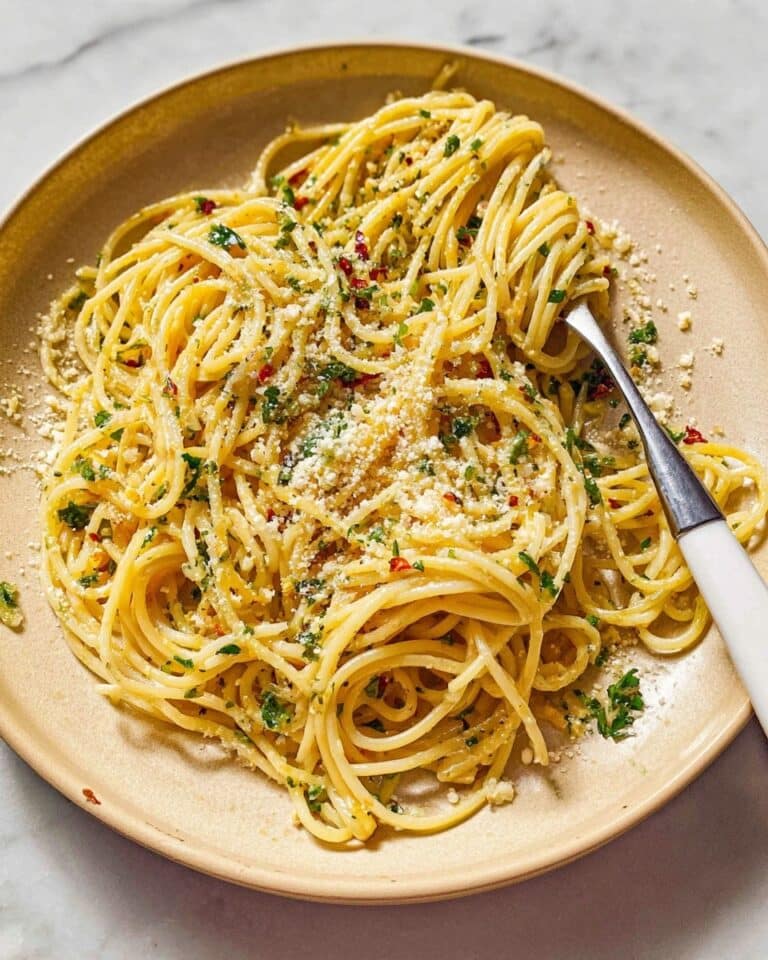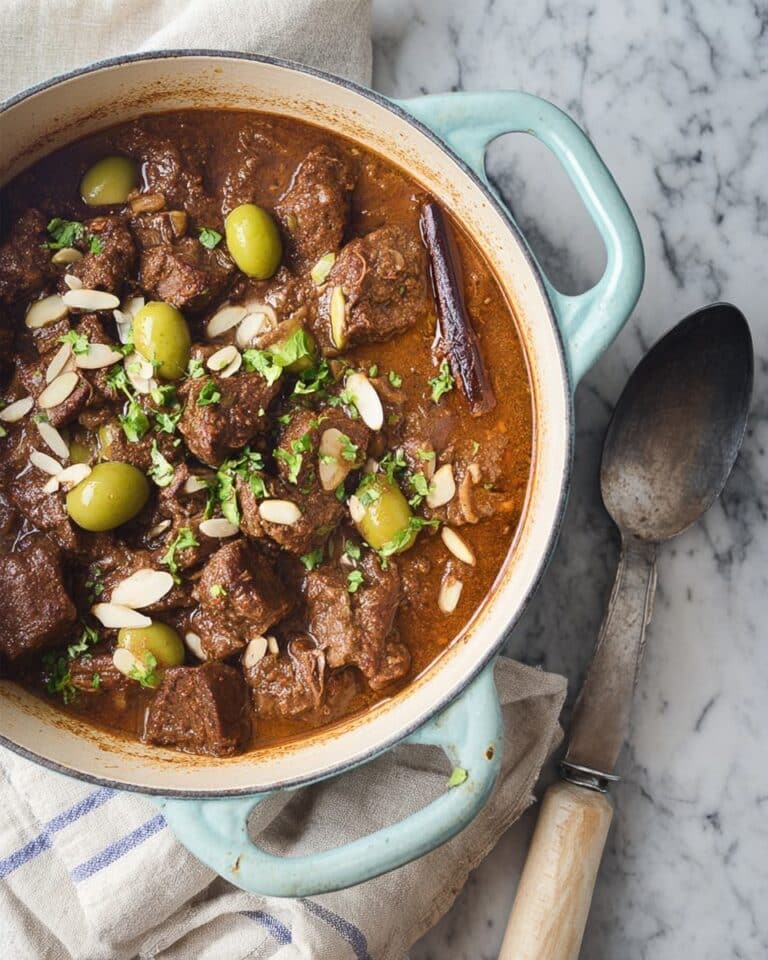If you’re looking for the perfect weeknight dinner that dazzles with bold flavor and comes together in well under 30 minutes, this Gochujang Salmon is about to become your new obsession. Sweet, spicy, sticky, and so delightfully savory, every bite packs the punch of Korean-inspired goodness—all with practically zero effort.
Why You’ll Love This Recipe
- Effortless Dinner Hero: This Gochujang Salmon comes together with just a handful of ingredients and barely any prep—perfect for busy evenings.
- Bold, Unique Flavor: The sweet, spicy, and umami-rich marinade brings restaurant-level taste to your kitchen, elevating simple salmon to something truly special.
- Customizable Heat: You get to decide just how spicy things get, making it a crowd-pleaser for both heat-seekers and milder palates alike.
- Beautiful Presentation: Finished with sesame seeds and green onions, this dish looks as amazing as it tastes—hello, instant dinner upgrade!
Ingredients You’ll Need
You don’t need a massive grocery list to make magic happen—just a few thoughtfully chosen ingredients come together for unforgettable flavor. Each component in this Gochujang Salmon recipe plays an important part, from the fiery Gochujang paste to the final sprinkle of green onions.
- Gochujang paste: The star of the show! This Korean chili paste delivers deep, spicy-sweet heat and gorgeous color.
- Garlic: Freshly minced garlic perks up the marinade, mingling perfectly with the other bold flavors.
- Lime juice: A splash of lime adds brightness and keeps the glaze vibrant.
- Honey: Balances the spicy and savory kick of gochujang with a gentle, sticky sweetness.
- Sesame oil: Gives the glaze its irresistible, nutty aroma and a silky sheen.
- Low sodium soy sauce: Adds umami depth without overpowering the fish.
- Rice wine vinegar: Offers just a touch of tang to round out the sauce.
- Red pepper flakes (optional): Crank up the heat level to your liking with a pinch or two.
- Salmon filets: Choose skin-on filets for that delicious crispy bottom after searing.
- Olive oil or avocado oil: Either oil works beautifully for giving your salmon a golden-brown sear.
- Sesame seeds & green onions: Don’t skip these finishing touches—both add a pop of crunch, color, and a fresh bite!
Variations
One of my favorite things about Gochujang Salmon is its flexibility! This recipe takes well to tweaks—so feel free to personalize it using what you have, what you love, or whatever your mood craves.
- Milder or Hotter Sauce: For gentler heat, skip the extra red pepper flakes, or bring on the spice with an additional teaspoon of gochujang or more flakes.
- Swap the Citrus: Don’t have lime? Switch in lemon juice for a slightly different tang that’s just as delightful.
- Alternate Proteins: This marinade also tastes incredible on shrimp or tofu for a pescatarian or vegetarian twist.
- Gluten-Free Option: Use tamari or coconut aminos instead of soy sauce to keep things gluten-free without missing out on flavor.
How to Make Gochujang Salmon
Step 1: Make the Gochujang Marinade
In a mixing bowl, whisk together the gochujang paste, garlic, lime juice, honey, sesame oil, soy sauce, rice wine vinegar, and, if you like it spicy, a dash of red pepper flakes. This glossy sauce is the heart of your Gochujang Salmon—set it aside while you prep the fish.
Step 2: Prepare and Sear the Salmon
Pat your salmon filets dry with paper towels (this is key for crispy skin!) and season with a sprinkle of salt and pepper. Heat your olive or avocado oil in a large cast-iron skillet over high heat. Lay the salmon skin-side down in the pan and let it sizzle undisturbed for about 3 minutes, forming that irresistible browned crust.
Step 3: Glaze and Roast in the Oven
While the salmon sears, generously brush the flesh side with your gochujang marinade. Slide the skillet into a preheated 400°F oven and roast for 8–10 minutes, or until the salmon is just cooked to your liking. For foolproof results, aim for an internal temp of 125–135°F.
Step 4: Rest and Garnish
Take the skillet out and let the salmon rest for at least 5 minutes. This gives the juices time to redistribute for maximum tenderness. To finish, sprinkle each filet with toasted sesame seeds and sliced green onions for a fresh, restaurant-worthy finish.
Pro Tips for Making Gochujang Salmon
- Skin-on Salmon Sear: Always start with skin-side down—the hot skillet makes the skin irresistibly crisp while locking in moisture underneath.
- Don’t Overcook! Salmon loves gentle treatment—pull it from the oven just before it seems done, as residual heat finishes the job perfectly.
- Mix the Marinade Ahead: Whisking the gochujang sauce in advance gives the flavors time to meld and makes dinnertime even easier.
- Finish with Freshness: For the most vibrant touch, slice the green onions right before serving your Gochujang Salmon.
How to Serve Gochujang Salmon

Garnishes
There’s nothing like a little flair! A generous sprinkle of toasted sesame seeds and a tumble of sliced green onions not only brighten the plate, but add texture and a gentle, herby zip that balances the savory-sweet glaze on your Gochujang Salmon.
Side Dishes
This dish absolutely shines alongside fluffy steamed rice, quick stir-fried veggies, or a crisp Asian-style slaw. Gochujang Salmon also pairs deliciously with garlicky bok choy, roasted sweet potato, or a light cucumber salad for cool contrast.
Creative Ways to Present
Try serving your salmon on a big platter over rice for a family-style meal, or slice it into bite-sized pieces for grain bowls and hearty salads. For a fun twist, tuck Gochujang Salmon into lettuce leaves for spicy, saucy lettuce wraps at your next gathering.
Make Ahead and Storage
Storing Leftovers
Keep any leftover Gochujang Salmon in an airtight container in the fridge for up to 3 days. The flavors intensify overnight, making tomorrow’s lunch (or midnight snack) even more irresistible.
Freezing
Yes, you can freeze cooked salmon! Let it cool completely, then wrap tightly in foil or plastic wrap and place in a freezer bag. It will keep beautifully for up to 2 months—simply thaw overnight in the fridge before use.
Reheating
To gently rewarm, place salmon in a low oven (about 300°F) until just heated through, or microwave in short bursts at medium power. For the crispiest skin, pop it under the broiler for a minute or two at the end.
FAQs
-
Can I use frozen salmon for Gochujang Salmon?
Absolutely! Just be sure to thaw the salmon completely in the fridge before cooking. Pat it dry thoroughly to ensure the skin crisps up nicely during searing.
-
Is Gochujang very spicy?
Gochujang paste has a moderate heat balanced by sweetness and depth—most people find it pleasantly warming, not overwhelmingly hot. It’s easy to adjust by adding or reducing the quantity and skipping the extra pepper flakes if you want a milder taste.
-
Do I have to use a cast-iron skillet?
Cast-iron holds heat beautifully and is ideal for crispy skin, but any oven-safe skillet will work. Just make sure it can withstand the oven temperature and is large enough to fit the salmon filets comfortably.
-
How can I tell when my salmon is done cooking?
The salmon is ready when it flakes easily with a fork and the center looks opaque but still moist. For best results, use a meat thermometer and aim for an internal temperature of 125–135°F for medium-rare to medium doneness.
Final Thoughts
This Gochujang Salmon truly brings dinner-time excitement to your table without any hassle. I hope you give it a try and discover how effortless—and rewarding—a bold, flavor-packed meal can be. Enjoy every spicy, saucy bite!
Print
Gochujang Salmon Recipe
- Prep Time: 5 minutes
- Cook Time: 12 minutes
- Total Time: 25 minutes
- Yield: 4 servings
- Category: Seafood
- Method: Baking, Searing
- Cuisine: Asian
- Diet: Pescatarian
Description
This Gochujang Salmon recipe is a flavorful and spicy twist on traditional salmon dishes. The gochujang glaze adds a delicious kick to perfectly cooked salmon fillets, making it a must-try for seafood lovers.
Ingredients
Gochujang Glaze:
- 3-4 tablespoons gochujang paste
- 2 cloves garlic, minced
- 1/2 lime, juiced
- 1 tablespoon honey
- 1/2 tablespoon sesame oil
- 1/2 tablespoon low sodium soy sauce
- 1/2 tablespoon rice wine vinegar
- 1/2 teaspoon red pepper flakes (optional)
Salmon:
- 4 6-8 ounce salmon fillets
- 1 tablespoon olive oil or avocado oil
- Sesame seeds for garnish
- Sliced green onions for garnish
Instructions
- Preheat the oven: Preheat the oven to 400 degrees F.
- Prepare the glaze: In a bowl, combine gochujang, garlic, lime juice, honey, sesame oil, soy sauce, rice wine vinegar, and red pepper flakes. Whisk well.
- Season the salmon: Pat dry the salmon fillets, season with salt and pepper.
- Sear the salmon: Heat oil in a skillet, sear salmon skin-side down for 3 minutes.
- Glaze and roast: Brush salmon with the gochujang glaze, then roast in the oven until cooked through, about 8-10 minutes.
- Rest and garnish: Let the salmon rest for 5 minutes before serving. Garnish with sesame seeds and green onions.
Notes
- Cooking temperatures for salmon: Medium-Rare (125-130°F), Medium (135-140°F), Well-Done (145°F+)
Nutrition
- Serving Size: 1 fillet
- Calories: 323 kcal
- Sugar: 6g
- Sodium: 154mg
- Fat: 16g
- Saturated Fat: 2g
- Unsaturated Fat: 12g
- Trans Fat: 0g
- Carbohydrates: 9g
- Fiber: 0.4g
- Protein: 34g
- Cholesterol: 94mg









